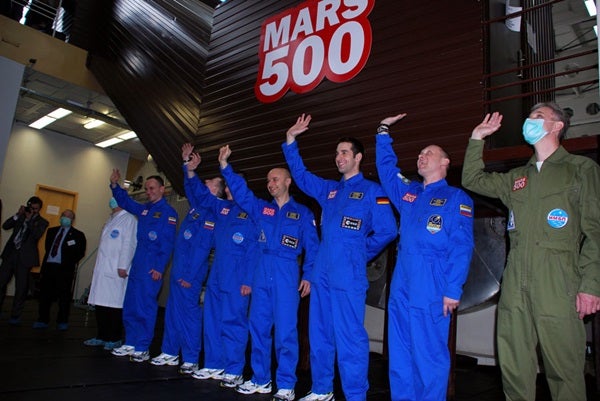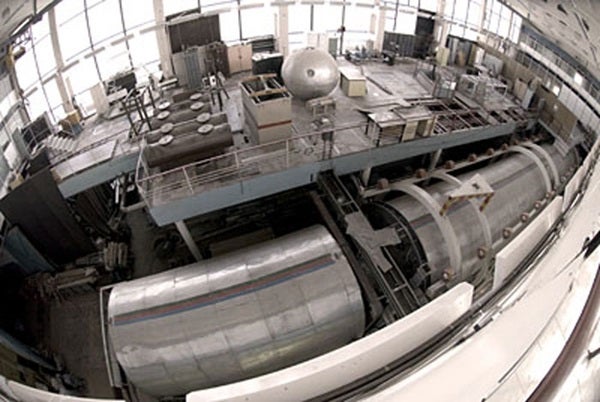Earlier today, a crew of six, including two European Space Agency-selected (ESA) participants and four Russians, embarked on a simulated mission to Mars. Although they will not leave the confines of a dedicated isolation facility in Moscow for 105 days, their mission will help prepare for a human mission to Mars in the future.
Accompanying ESA-selected participants Oliver Knickel and Cyrille Fournier on their simulated journey are four Russian crewmembers: cosmonauts Oleg Artemyez and Sergei Ryazansky, Alexei Baranov – a doctor, and Alexei Shpakov – a sports physiologist.
During their stay in the facility, the crew will experience all aspects of a mission to the Red Planet, including launch, the outward journey, arrival at Mars and, after an excursion to the surface, the long journey home.
Their tasks will be similar to those on a real space mission. They will have to cope with simulated emergencies, maybe even real emergencies. Communication delays of as much as 20 minutes each way will not make life any easier.
The crewmembers will act as subjects in scientific investigations to assess the effect that isolation has on various psychological and physiological aspects, such as stress, hormone regulation and immunity, sleep quality, mood, and the effectiveness of dietary supplements.
“A crew traveling to Mars will face major challenges such as how to cope with being confined to a small space and seeing the same faces for one and a half years,” said Martin Zell, head of the International Space Station (ISS) Utilization Department in ESA’s Directorate of Human Spaceflight.
The 105-day study precedes a full simulation of a mission to Mars, due to start late in 2009. This will see another six-member crew sealed in the same chamber to experience a complete 520-day Mars mission simulation.
Both studies are part of the Mars500 program conducted by ESA and the Russian IBMP, with Roscosmos funding. ESA’s Directorate of Human Spaceflight is undertaking Mars500 within its European Program for Life and Physical Sciences (ELIPS) to prepare for future missions to the Moon and Mars.
“Mars500 is the proof that we are preparing for the future,” said Simonetta di Pippo, ESA’s director of Human Spaceflight.
“The International Space Station is about to reach full operational capability with a crew of six, and the international partners are considering how to maximize the investment made in the station by working towards a possible extension of its lifetime. In parallel, we are intensifying our activities in preparation for the next steps in human spaceflight and exploration as part of the Global Exploration Strategy together with the space agencies worldwide who endorsed it. Mars500 is an important part of this global endeavor as it provides us with the knowledge of how to keep a small crew psychologically and physiologically healthy and, ultimately, to succeed in the big challenge to bring humankind to Mars and safely back to Earth.”
Follow the crew throughout their simulated mission, including regular diary updates from the ESA participants, on the ESA website.











